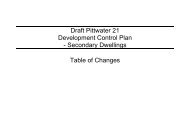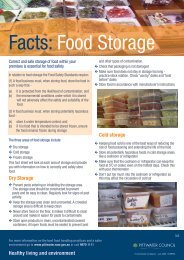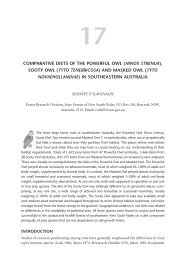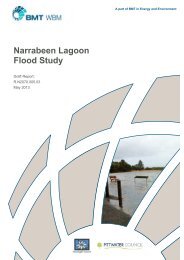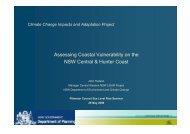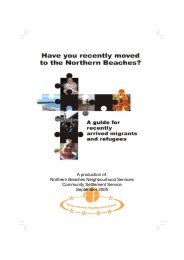Facts: Temperature Control
Facts: Temperature Control
Facts: Temperature Control
- No tags were found...
Create successful ePaper yourself
Turn your PDF publications into a flip-book with our unique Google optimized e-Paper software.
<strong>Facts</strong>: <strong>Temperature</strong> <strong>Control</strong><strong>Temperature</strong> <strong>Control</strong>Potentially hazardous food (such as meat, poultry, eggs, milkor milk products and cooked rice) must be suitably controlledin accordance with the Food Safety Standards to prevent therapid or progressive growth of harmful bacteria.One way to prevent the growth of bacteria is by ensuringtemperature is controlled. The Food Safety Standards requirethat temperature control be maintained for potentiallyhazardous foods in the following areas:Food receiptFood storageFood processingFood display andFood transportationThe simple rule regarding correct temperature control ofpotentially hazardous food is:Either keep food steaming hot, above 60ºCOr keep food cold, below 5ºCOr demonstrate that storing the food outside thesetemperatures will not adversely affect the microbiologicalsafety of the food.What Is <strong>Temperature</strong> Danger Zone?The growth of harmful bacteria can be controlled bytemperature. The temperature range between 5ºC and 60ºCis known as the temperature danger zone. Bacteria canmultiply rapidly if food is left in this “danger zone”.100 o CMost food poisoning bacteria are killed,however, will not always kill bacterial spores.60 o C<strong>Temperature</strong> Danger ZoneFood poisoning bacteria rapidly multiplyin this temperature danger zone.5 o C<strong>Temperature</strong> <strong>Control</strong> Means18 0 o CFood poisoning bacteria are . dormantMaintaining food at a temperature of:a) 5ºC or below, this is necessary to minimise the growth ofinfectious or toxigenic micro-organisms in the food so thatthe microbiological safety of the food will not be adverselyaffected for the time the food is at that temperature;b) 60ºC, or above or;c) Another temperature - if the food business demonstratesthat maintenance of the food at this temperature for theperiod of time for which it will be so maintained, will notadversely affect the microbiological safety of the food.-18 0 o CIt is a requirement that your business understandstemperature control and ensures that potentially hazardousfoods are kept out of the danger zone. Keeping food at thecorrect temperature will not only help reduce the risk ofcausing illness, but it will also reduce food spoilage andmaximise the shelf life of the food.For more information on the best food handling practices and a saferenvironment go to www.pittwater.nsw.gov.au or call 9970 11113.9Healthy living and environmentEnvironmental Compliance / July 2008 / ECHRP08







